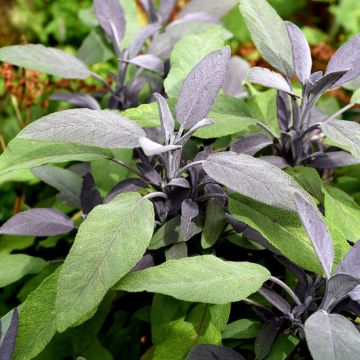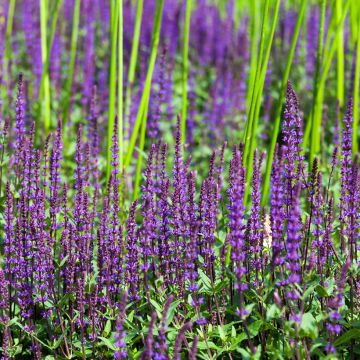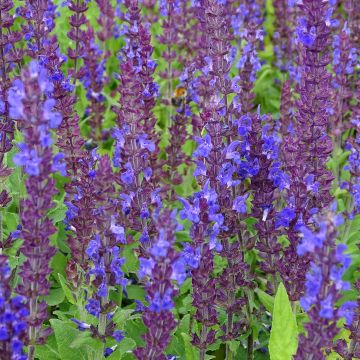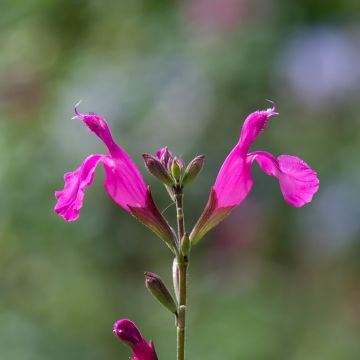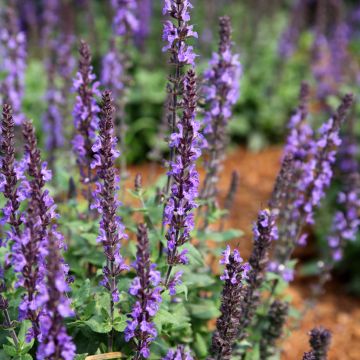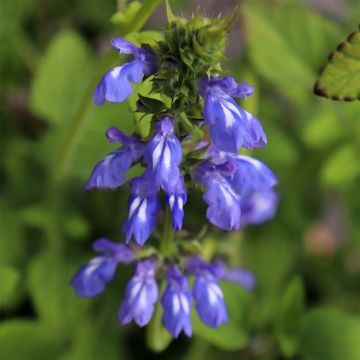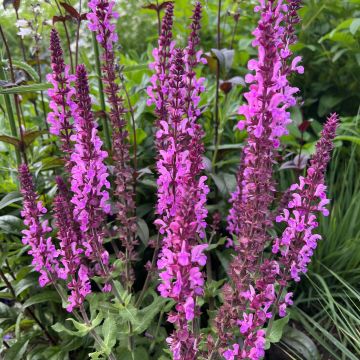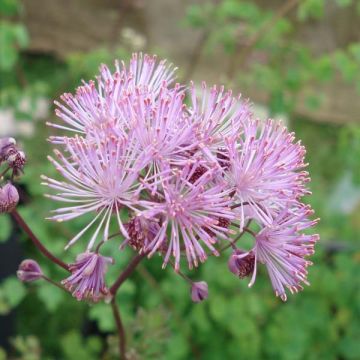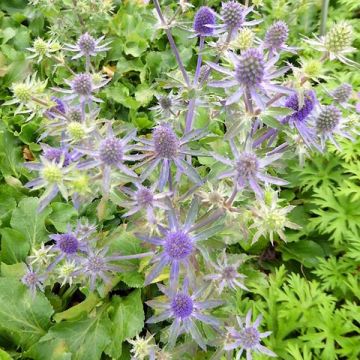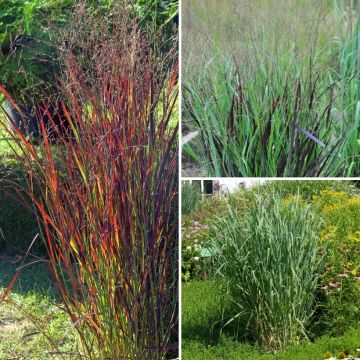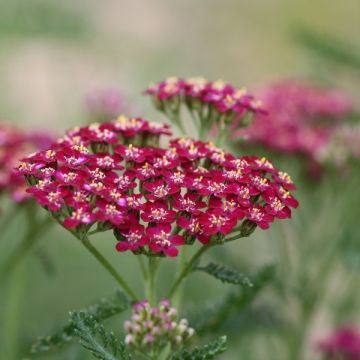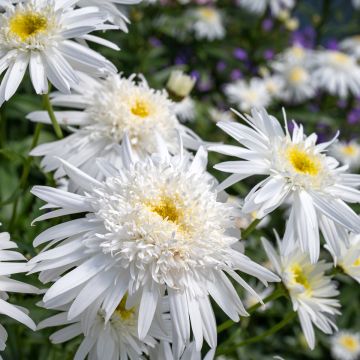

Salvia uliginosa


Salvia uliginosa
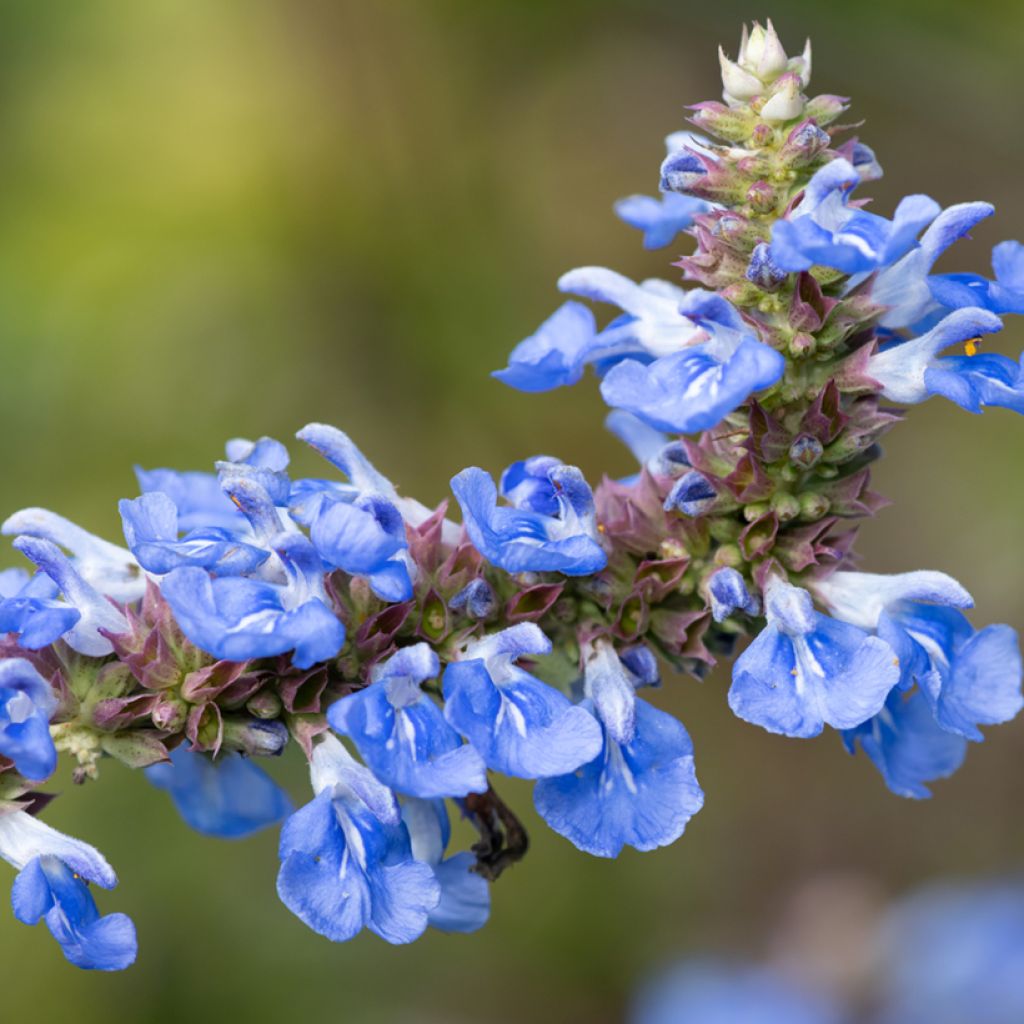

Salvia uliginosa


Salvia uliginosa
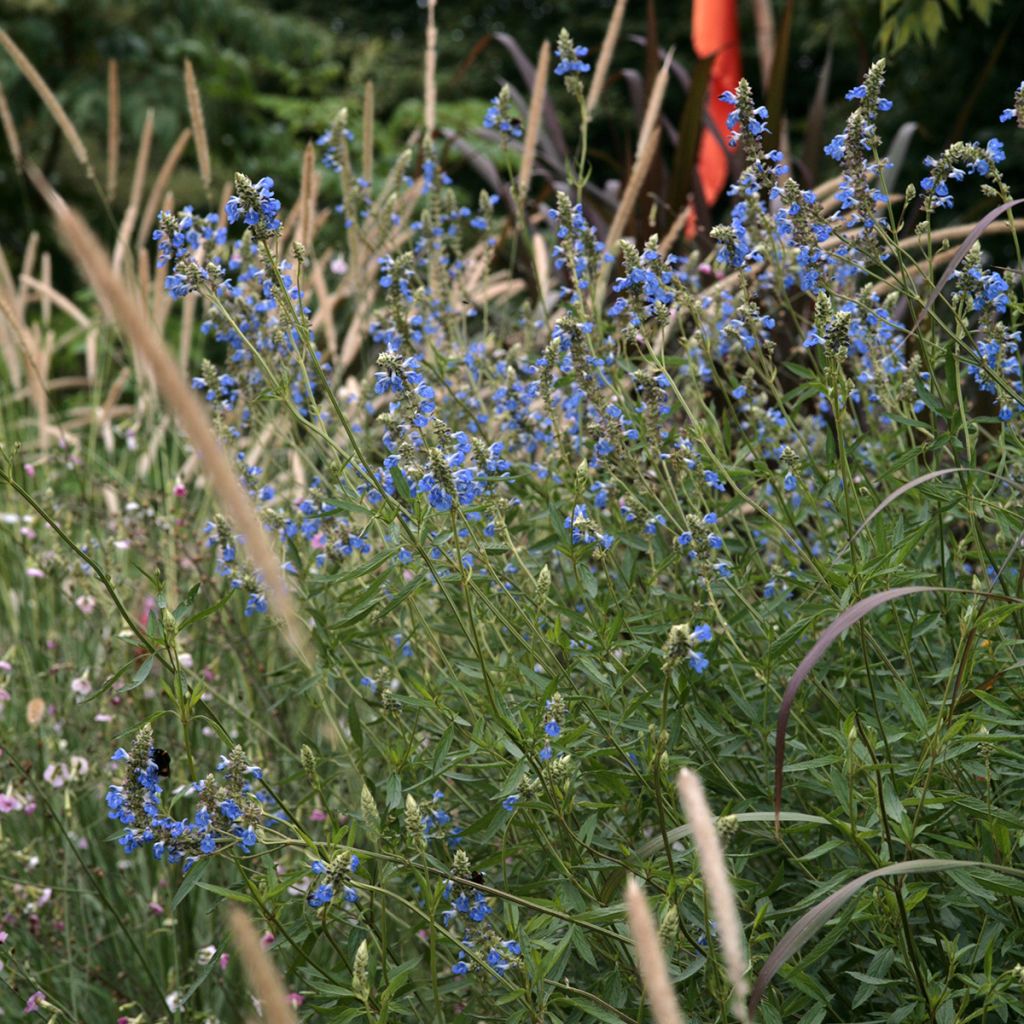

Salvia uliginosa


Salvia uliginosa
Salvia uliginosa
Salvia uliginosa
Bog Sage
I love this plant with its very beautiful light blue flowers, graphic and airy. Very happy to have found this plant that already offers me a beautiful show. Can't wait for it to become denser.
Ad, 20/10/2025
Special offer!
Receive a €20 voucher for any order over €90 (excluding delivery costs, credit notes, and plastic-free options)!
1- Add your favorite plants to your cart.
2- Once you have reached €90, confirm your order (you can even choose the delivery date!).
3- As soon as your order is shipped, you will receive an email containing your voucher code, valid for 3 months (90 days).
Your voucher is unique and can only be used once, for any order with a minimum value of €20, excluding delivery costs.
Can be combined with other current offers, non-divisible and non-refundable.
Home or relay delivery (depending on size and destination)
Schedule delivery date,
and select date in basket
This plant carries a 12 months recovery warranty
More information
We guarantee the quality of our plants for a full growing cycle, and will replace at our expense any plant that fails to recover under normal climatic and planting conditions.

Would this plant suit my garden?
Set up your Plantfit profile →
Description
Unlike most other species of sage, the Salvia uliginosa, also known as Bog Sage, is a perennial plant that thrives in moist to wet soils. This vigorous but moderately hardy plant can reach a height of up to 2m (7ft) and offers a spectacular and poetic flowering display towards the end of the season, with upright spikes adorned with sky-blue flowers. Sometimes slow to establish, it spreads through stolons and can eventually cover large areas where it is happy. To give it the best chance against winter harshness, it should be planted in spring, in a very sunny location, in fresh, slightly alkaline soil.
Bog Sage is a perennial herb with deciduous foliage that belongs to the Lamiaceae family. It is originally from South America and thrives in open and marshy areas. It grows very quickly, typically reaching a height of 1.50m (5ft) and spreading up to 80cm (32in) to 1m (3ft). Bog Sage has a rhizomatous growth habit, with stems borne by an underground stoloniferous stem that can extend deep. The plant features light foliage carried by thin stems, which are narrow, square in cross-section, and bear mostly opposite leaves, separated along the stem by long internodes. The leaves are narrow, measuring 5 to 13cm (2 to 5in) in length and 1 to 2cm (1in) in width. Their surface is slightly hairy or glabrous, and their margin is dentate. The stems branch out and produce numerous floral spikes that succeed each other from June to November. The small flowers are tubular and bilabiate, measuring 1.5 to 2cm (1in) in length, and have two lips with the upper lip shaped like a helmet. They are a vivid azure blue, marked with a small white throat that attracts attention as well as pollinating insects. The peacock butterfly is often seen feeding on them and gathering strength before winter. Vegetation restarts at the end of May.
Bog Sage has a spectacular and long-lasting flowering display but can also be demanding. It is often used in dahlia beds, which lightens the overall floral display and enhances the colours of other plants. Sage enthusiasts can combine it with other plants like Euryops, bright pink Salvia greigii, vivid red Salvia darcyi, or yellow-flowered Salvia glutinosa. It can also be combined with Heleniums or pure white Ethiopian arums and yellow irises on the banks of a pond. Bog Sage is a "cloud" plant that enhances colours and allows many combinations.
The Salvia genus is the most diverse in the Lamiaceae family, with over 900 species of annuals, perennials, and soft-wooded shrubs distributed worldwide, except in very cold regions and tropical forests.
Report an error about the product description
Salvia uliginosa in pictures






Flowering
Foliage
Plant habit
Botanical data
Salvia
uliginosa
Lamiaceae
Bog Sage
South America
Other Salvia - Sage
View all →Planting and care
To grow this lovely young plant successfully, it's best to plant it in the spring in a sunny spot with soil that's neutral to limestone and moist to damp. It's also adaptable to rich, well-drained soil, so be sure to give it a base fertiliser during planting. In colder regions, trim it back to 25 cm (10in) at the beginning of winter and mulch it. Once it's well-established, it can tolerate short periods of drought, but it's important to water it regularly.
Planting period
Intended location
Care
-
, onOrder confirmed
Reply from on Promesse de fleurs
Similar products
Haven't found what you were looking for?
Hardiness is the lowest winter temperature a plant can endure without suffering serious damage or even dying. However, hardiness is affected by location (a sheltered area, such as a patio), protection (winter cover) and soil type (hardiness is improved by well-drained soil).

Photo Sharing Terms & Conditions
In order to encourage gardeners to interact and share their experiences, Promesse de fleurs offers various media enabling content to be uploaded onto its Site - in particular via the ‘Photo sharing’ module.
The User agrees to refrain from:
- Posting any content that is illegal, prejudicial, insulting, racist, inciteful to hatred, revisionist, contrary to public decency, that infringes on privacy or on the privacy rights of third parties, in particular the publicity rights of persons and goods, intellectual property rights, or the right to privacy.
- Submitting content on behalf of a third party;
- Impersonate the identity of a third party and/or publish any personal information about a third party;
In general, the User undertakes to refrain from any unethical behaviour.
All Content (in particular text, comments, files, images, photos, videos, creative works, etc.), which may be subject to property or intellectual property rights, image or other private rights, shall remain the property of the User, subject to the limited rights granted by the terms of the licence granted by Promesse de fleurs as stated below. Users are at liberty to publish or not to publish such Content on the Site, notably via the ‘Photo Sharing’ facility, and accept that this Content shall be made public and freely accessible, notably on the Internet.
Users further acknowledge, undertake to have ,and guarantee that they hold all necessary rights and permissions to publish such material on the Site, in particular with regard to the legislation in force pertaining to any privacy, property, intellectual property, image, or contractual rights, or rights of any other nature. By publishing such Content on the Site, Users acknowledge accepting full liability as publishers of the Content within the meaning of the law, and grant Promesse de fleurs, free of charge, an inclusive, worldwide licence for the said Content for the entire duration of its publication, including all reproduction, representation, up/downloading, displaying, performing, transmission, and storage rights.
Users also grant permission for their name to be linked to the Content and accept that this link may not always be made available.
By engaging in posting material, Users consent to their Content becoming automatically accessible on the Internet, in particular on other sites and/or blogs and/or web pages of the Promesse de fleurs site, including in particular social pages and the Promesse de fleurs catalogue.
Users may secure the removal of entrusted content free of charge by issuing a simple request via our contact form.
The flowering period indicated on our website applies to countries and regions located in USDA zone 8 (France, the United Kingdom, Ireland, the Netherlands, etc.)
It will vary according to where you live:
- In zones 9 to 10 (Italy, Spain, Greece, etc.), flowering will occur about 2 to 4 weeks earlier.
- In zones 6 to 7 (Germany, Poland, Slovenia, and lower mountainous regions), flowering will be delayed by 2 to 3 weeks.
- In zone 5 (Central Europe, Scandinavia), blooming will be delayed by 3 to 5 weeks.
In temperate climates, pruning of spring-flowering shrubs (forsythia, spireas, etc.) should be done just after flowering.
Pruning of summer-flowering shrubs (Indian Lilac, Perovskia, etc.) can be done in winter or spring.
In cold regions as well as with frost-sensitive plants, avoid pruning too early when severe frosts may still occur.
The planting period indicated on our website applies to countries and regions located in USDA zone 8 (France, United Kingdom, Ireland, Netherlands).
It will vary according to where you live:
- In Mediterranean zones (Marseille, Madrid, Milan, etc.), autumn and winter are the best planting periods.
- In continental zones (Strasbourg, Munich, Vienna, etc.), delay planting by 2 to 3 weeks in spring and bring it forward by 2 to 4 weeks in autumn.
- In mountainous regions (the Alps, Pyrenees, Carpathians, etc.), it is best to plant in late spring (May-June) or late summer (August-September).
The harvesting period indicated on our website applies to countries and regions in USDA zone 8 (France, England, Ireland, the Netherlands).
In colder areas (Scandinavia, Poland, Austria...) fruit and vegetable harvests are likely to be delayed by 3-4 weeks.
In warmer areas (Italy, Spain, Greece, etc.), harvesting will probably take place earlier, depending on weather conditions.
The sowing periods indicated on our website apply to countries and regions within USDA Zone 8 (France, UK, Ireland, Netherlands).
In colder areas (Scandinavia, Poland, Austria...), delay any outdoor sowing by 3-4 weeks, or sow under glass.
In warmer climes (Italy, Spain, Greece, etc.), bring outdoor sowing forward by a few weeks.






























